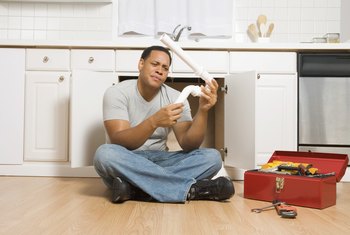
California is one of a handful of states that strictly regulates mold growth in rental properties. The presence of mold in your apartment or home can affect the indoor air quality, causing you to suffer from a range of harmful health effects from the spores. When you suspect mold growth, you have several methods available to report it. Once the mold is reported and verified, the landlord can take steps to eradicate it.
Dangers of Mold
Molds thrive in moist, warm environments and release spores into the air. Certain mold spores are toxic when inhaled, and they can cause a range of conditions, from rashes and allergies to severe respiratory problems. While mold can affect people of all ages, the elderly and children are at a higher risk of illness. Some molds are more hazardous than others, and only a certified removal specialist can eliminate mold completely. As a tenant, you are entitled to rent a mold-free property.
How to Detect Mold
The obvious way to detect mold is to see it. Mold can appear as yellow, brown or black patches or spots. While it is more likely to see mold growing in high moisture areas like the bathroom, kitchen or near windows, it can grow anywhere, including in the walls, carpet and floors. You may also notice a musty smell in highly concentrated areas as well as an increase in respiratory problems. California law requires landlords to disclose the presence of mold before a tenant signs a lease agreement.
Inform the Landlord
When you suspect mold growth, contact your landlord immediately and follow up in writing. Describe the problem in detail and take pictures if needed. If mold is growing in an area that doesn’t have a lot of moisture or even plumbing, such as in a closet, wall or bedroom, the landlord should check for leaking pipes, roofing or windows. The landlord must to not only repair any problems causing the mold growth, but taking every precaution when removing it. Keep notes of conversations and copies of letters and emails in case you need to share your side of the story in a dispute.
Other Options
If a landlord won’t take care of the mold problem, tenants have alternative places to report it. The local housing and code enforcement department can inspect the rental property and document any violations. The department can then put pressure on the landlord to make the repairs. A landlord can be held liable for any damages caused by inaction or neglect, so tenants can file a lawsuit in severe instances. You can also talk to your local housing and tenants rights group for advice on dealing with the mold issue, such as California’s “repair and deduct” remedy or when to contact an attorney.

Recent Comments